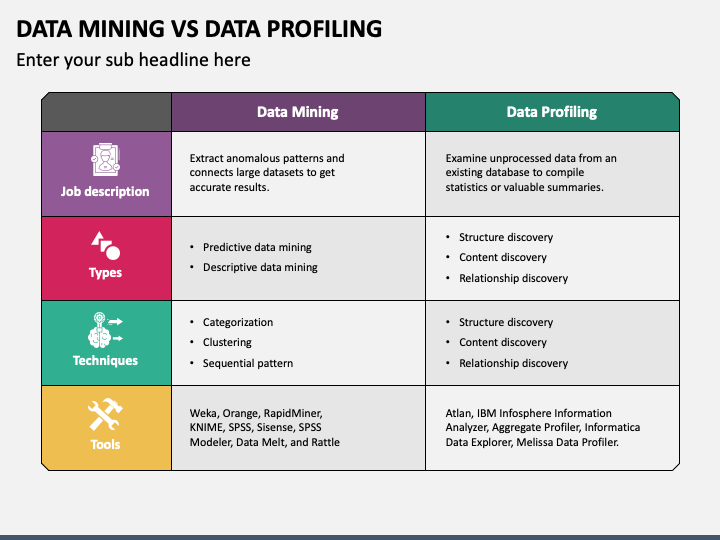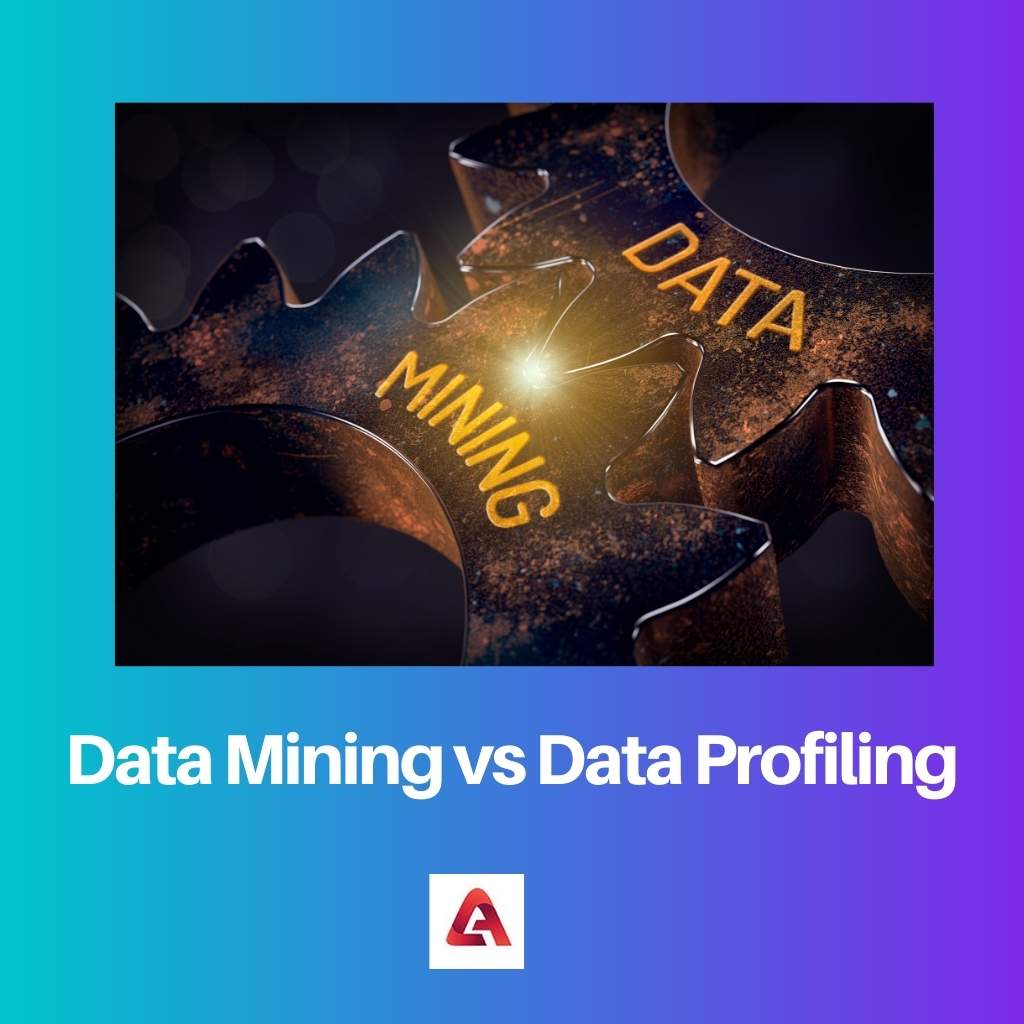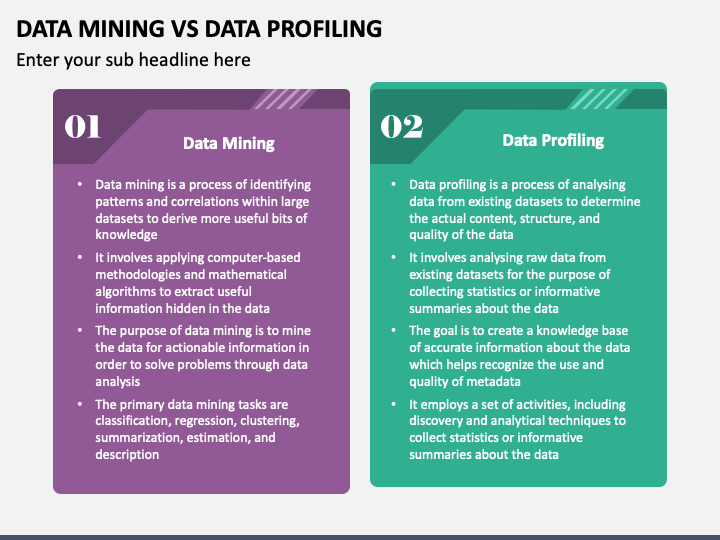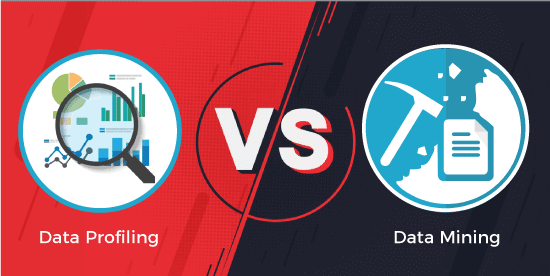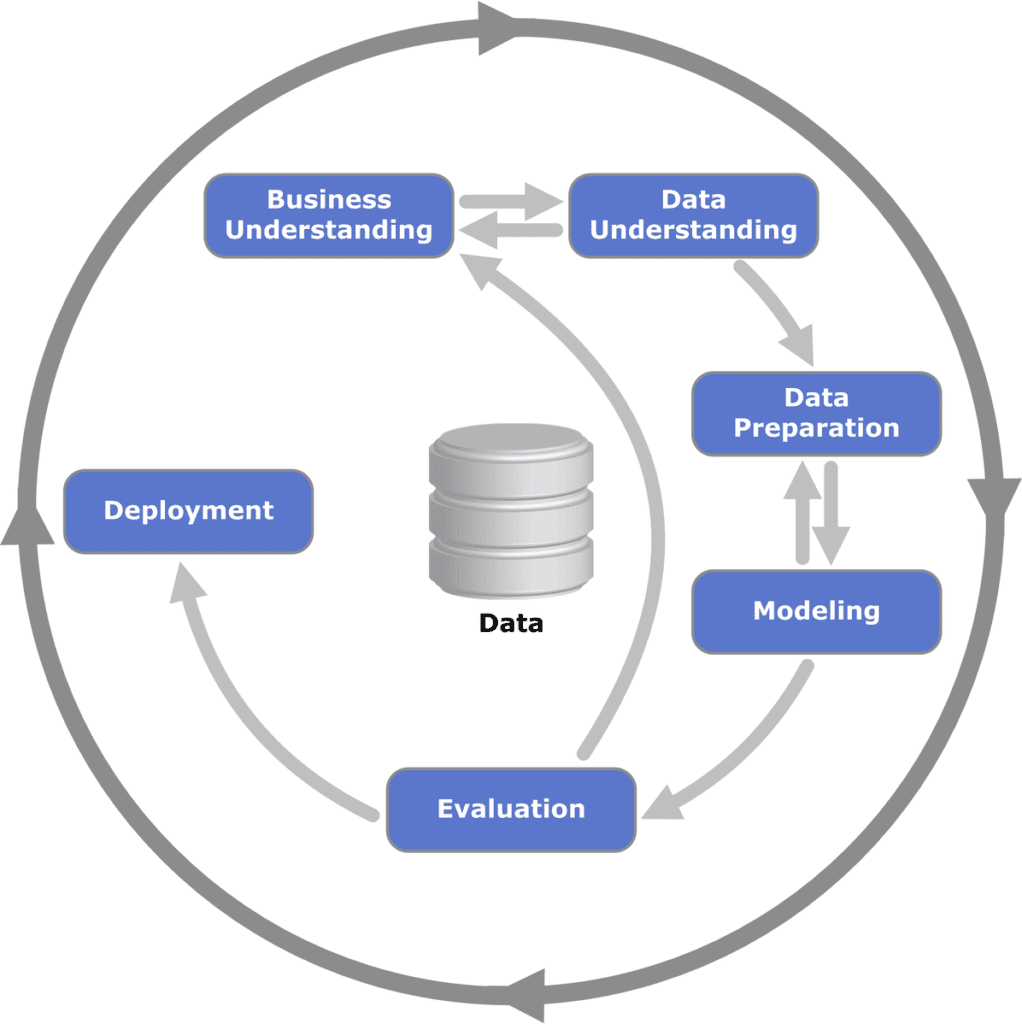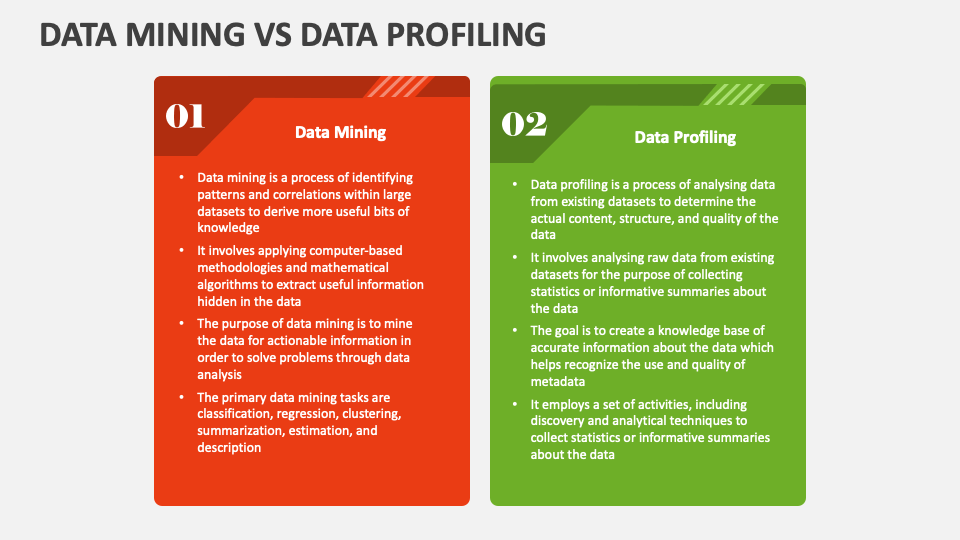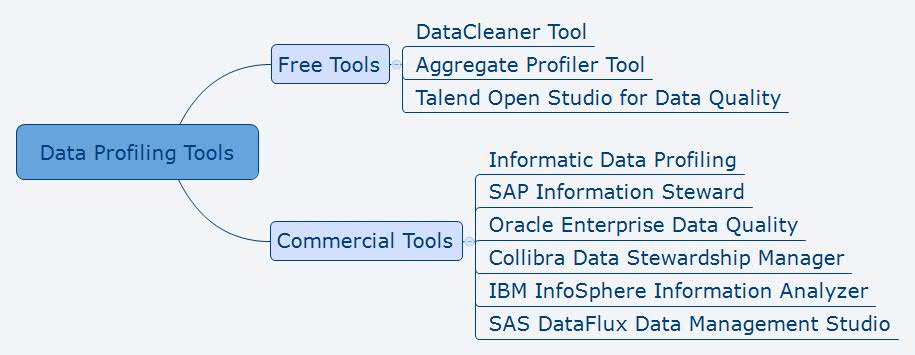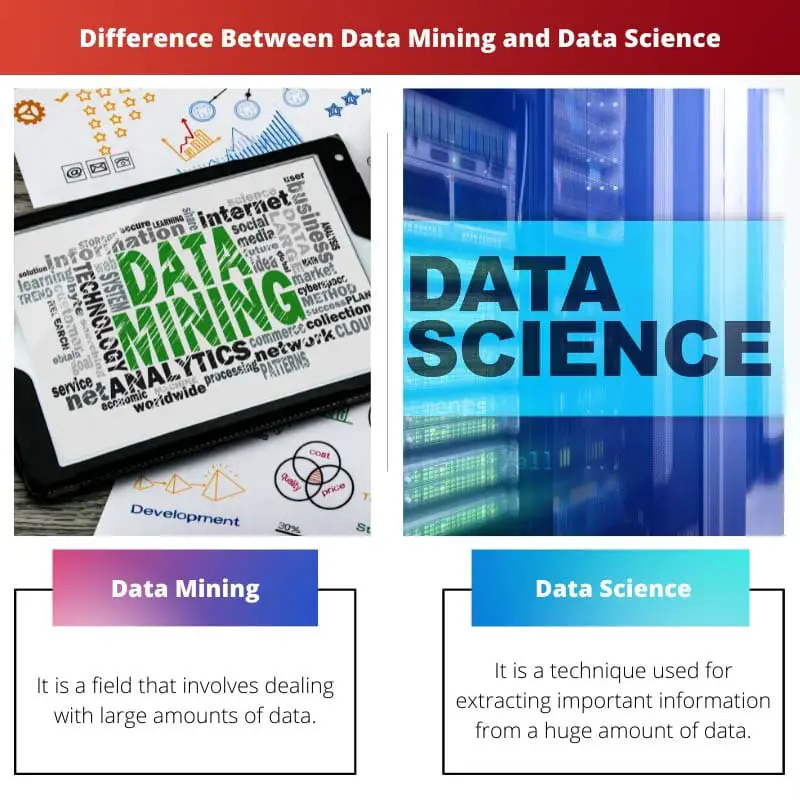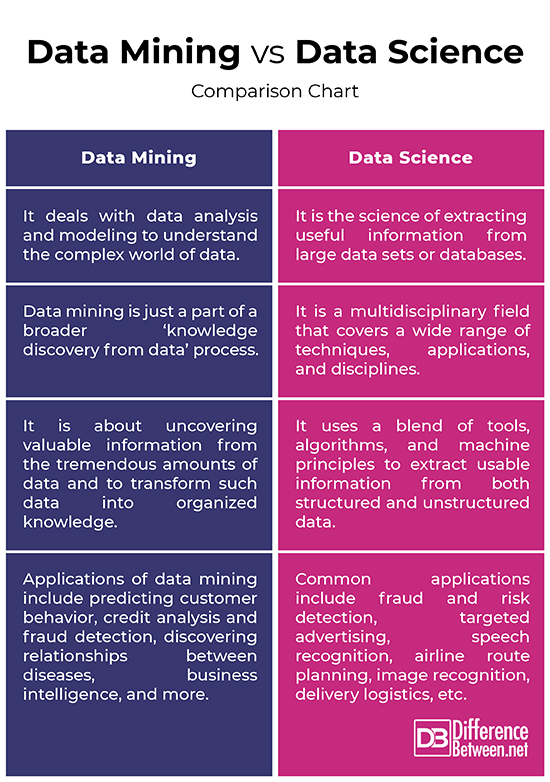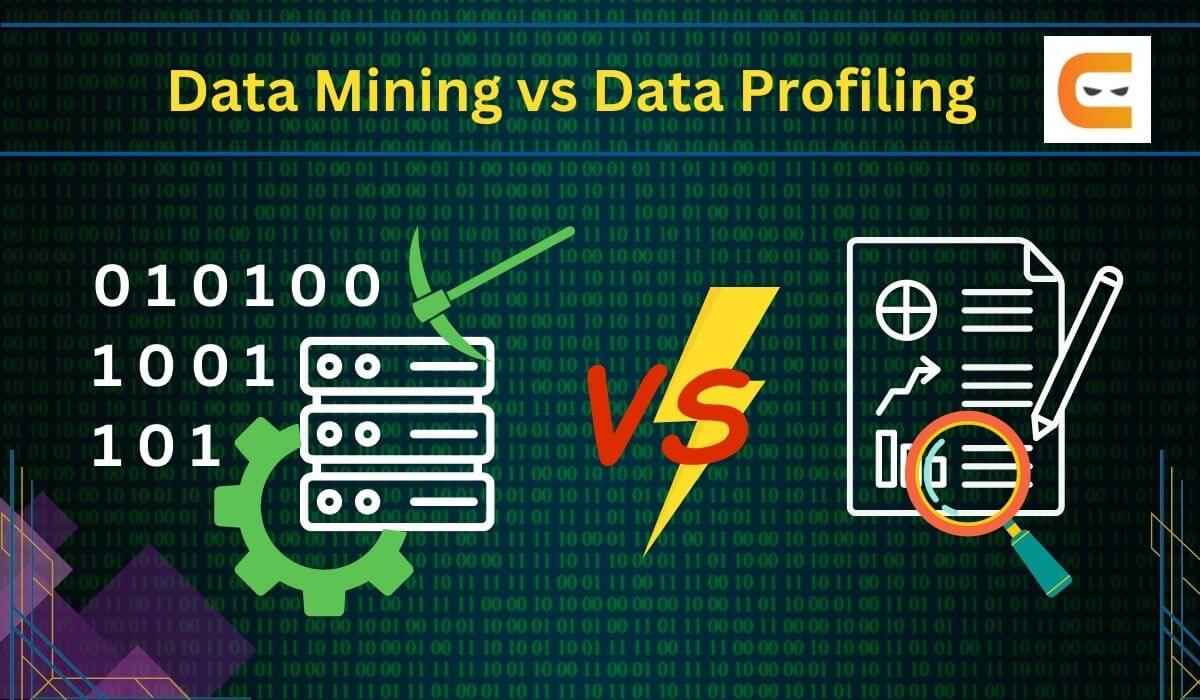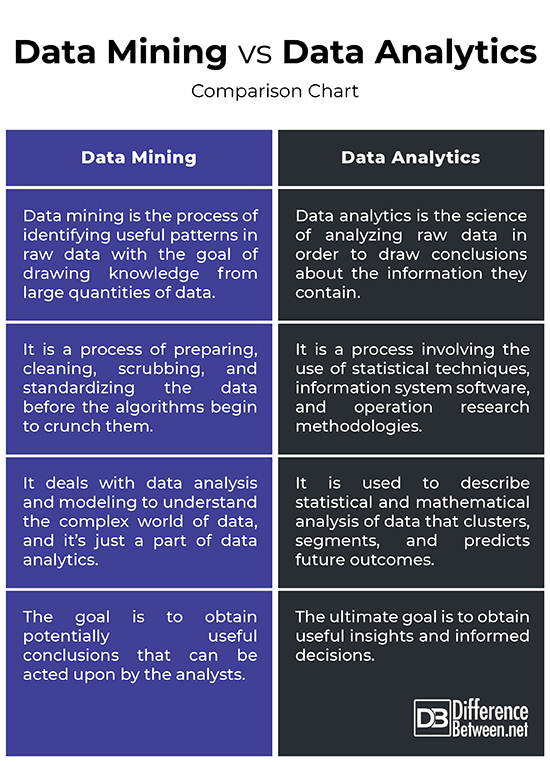Difference Between Data Mining And Data Profiling
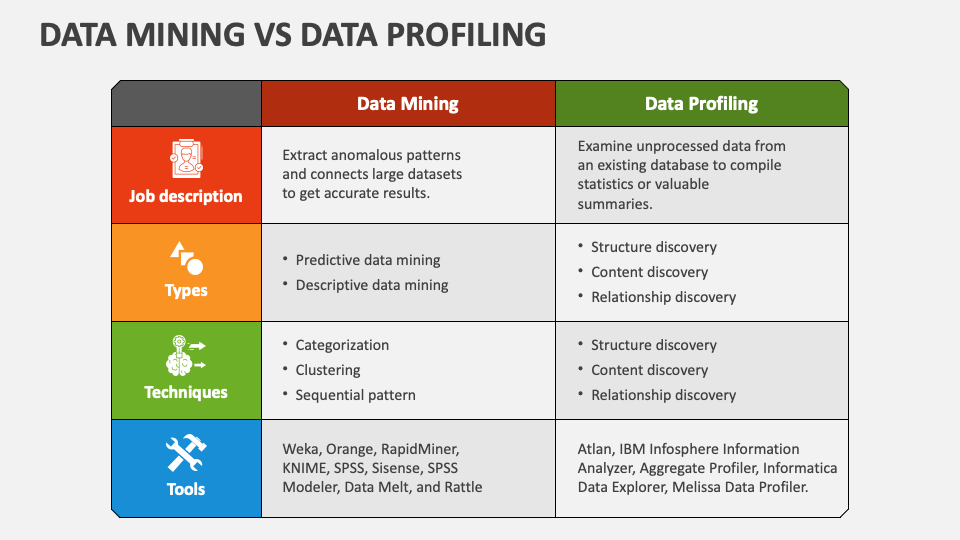
In today's data-driven world, organizations are constantly seeking ways to extract value from vast amounts of information. Two techniques, data mining and data profiling, are frequently used to achieve this goal. While both involve analyzing data, they serve distinct purposes and employ different methodologies.
This article dissects the nuanced differences between data mining and data profiling, outlining their core objectives, techniques, and practical applications. Understanding these distinctions is crucial for businesses aiming to leverage data effectively for strategic decision-making and operational efficiency.
Core Objectives and Definitions
Data mining, also known as knowledge discovery in databases (KDD), is a process of uncovering hidden patterns, trends, and relationships within large datasets. It goes beyond simple analysis to predict future outcomes or behaviors.
Data mining aims to build predictive models and actionable insights. Its objectives are to classify information, find trends, associations and anomalies, and predict future values.
In contrast, data profiling focuses on understanding the structure, content, and quality of a dataset. It's a detective work that assesses data for completeness, accuracy, and consistency.
Data profiling aims to create metadata about a dataset. It provides statistics such as minimum, maximum, mean, standard deviation, data types, and frequency distributions.
Techniques and Methodologies
Data mining employs various techniques, including classification, regression, clustering, and association rule learning. Algorithms are used to build models that can predict customer behavior or categorize data points.
For example, a retail company might use data mining to identify customer segments based on purchasing patterns. This information enables targeted marketing campaigns and personalized product recommendations.
Data profiling typically involves simpler statistical analysis and data quality checks. It primarily deals with analyzing data at column level to provide metadata information and data quality assessment.
SQL queries and scripting languages are often used to extract data statistics and identify data quality issues such as missing values or inconsistencies. This process helps improve data quality, ensuring the data is reliable for data mining or other analytical activities.
Practical Applications
The applications of data mining are widespread across industries. Financial institutions use it for fraud detection, healthcare providers for disease prediction, and marketing companies for customer segmentation.
According to a report by *McKinsey Global Institute*, companies that embrace data-driven decision-making are *23 times* more likely to acquire customers and *6 times* more likely to retain them.
Data profiling, on the other hand, is commonly used in data warehousing, data migration, and data integration projects. It's a vital process in understanding the source data and its characteristics before integrating it into a destination system.
A data migration project, for instance, could use data profiling to ensure that the data is compatible with the destination database schema. This step mitigates data loss and ensures data quality throughout the migration process.
Key Differences Summarized
The primary difference lies in their purpose: data mining seeks to discover new knowledge, while data profiling seeks to understand existing data. Data mining aims to predict and classify, whereas data profiling aims to describe and assess data quality.
Data mining is typically more complex and computationally intensive, requiring specialized algorithms and models. Data profiling, although it can be complex, is often more direct and involves simpler statistical analysis and data quality checks.
Another notable distinction is the level of automation. Data mining often requires more automation, whereas data profiling can involve manual reviews and interventions, especially when assessing data quality.
Challenges and Limitations
Data mining faces challenges related to data bias, overfitting, and interpretability. Overfitting occurs when a model learns the training data too well and fails to generalize to new data. Bias in data can lead to skewed and inaccurate insights.
Data profiling also has its limitations. It primarily focuses on surface-level characteristics and might not reveal complex relationships or hidden patterns within the data. The quality of data profiling is tied to the completeness of data.
Moreover, maintaining data profiling processes can be challenging, particularly as datasets evolve and grow. Continuous monitoring and adaptation are required to ensure ongoing accuracy.
Future Trends and Integration
The future of both data mining and data profiling lies in closer integration and automation. Machine learning techniques are increasingly being used to automate data profiling tasks, enabling faster and more accurate data quality assessment.
Data mining and data profiling can also be used synergistically. Data profiling can inform data mining, ensuring that the models are built on clean, reliable data. The initial step is performing data profiling to clean data and find a base.
As data volumes continue to grow, the need for both techniques will increase. Businesses will need to invest in robust data governance frameworks that incorporate both data mining and data profiling to unlock the full potential of their data assets.
Conclusion
Data mining and data profiling are essential tools in the data landscape, each serving a unique purpose. Data mining reveals hidden patterns and predictions, while data profiling ensures data quality and comprehensibility.
By understanding the nuances between these two techniques, organizations can make informed decisions on how to best leverage their data for strategic advantage. The combined power of data mining and data profiling will be crucial for organizations to stay competitive.
In conclusion, embracing both data mining and data profiling is no longer optional but a necessity for organizations seeking to thrive in the digital age. By focusing on understanding, assessing, and leveraging data, businesses can unlock insights, optimize operations, and drive innovation.
